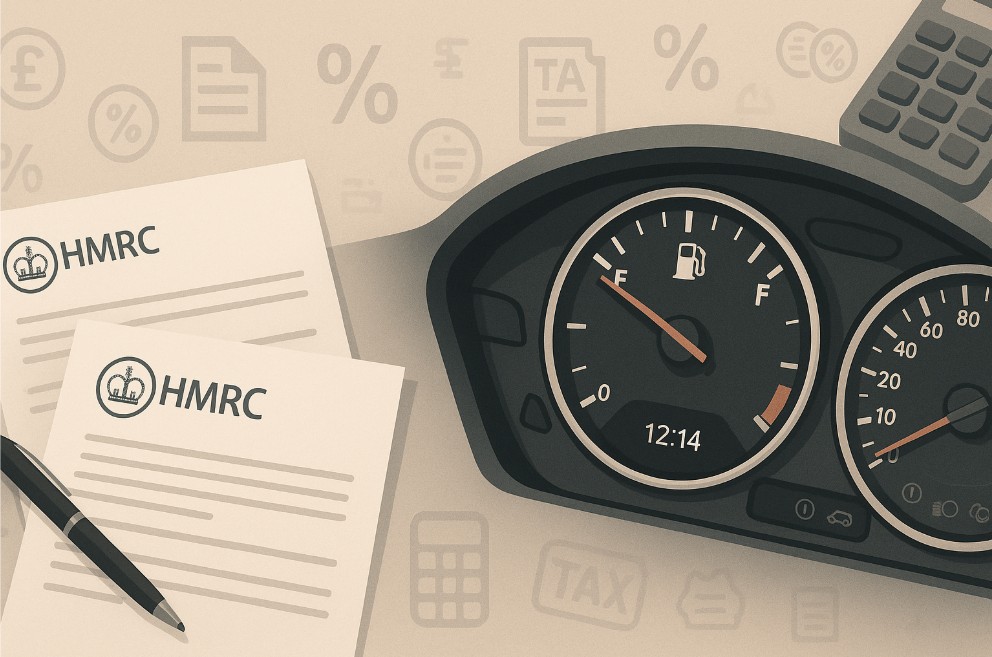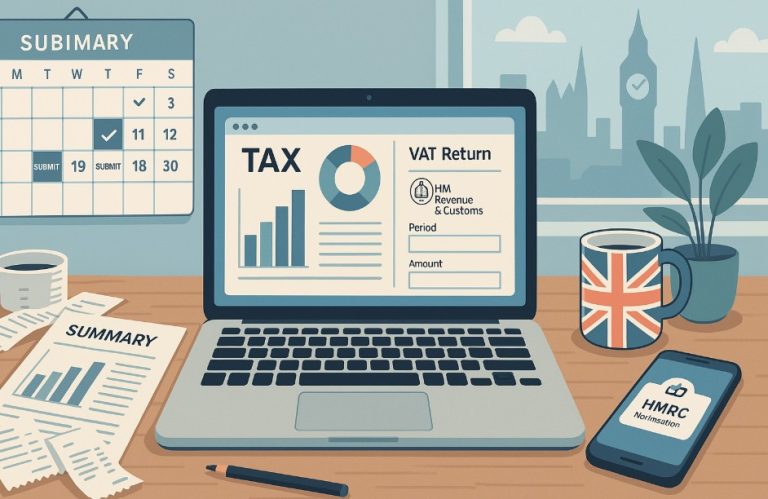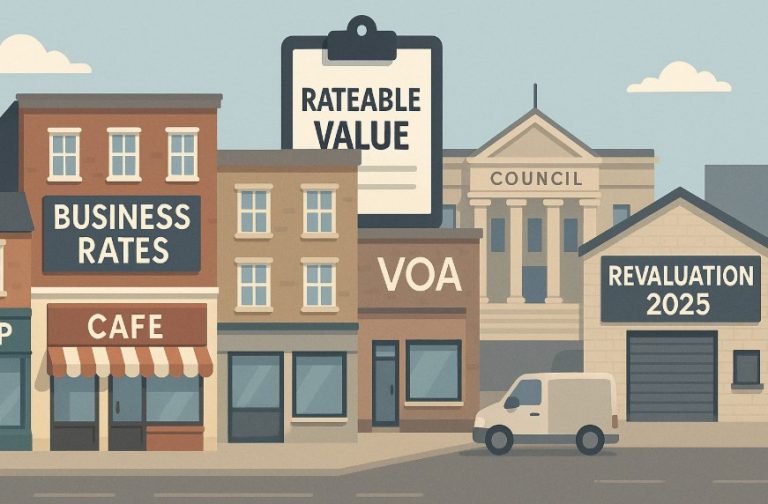HMRC Advisory Fuel Rates in 2025 | Latest Updates and Rates
Navigating business expenses can be overwhelming, especially when it comes to understanding mileage and fuel rates. Many employees and employers often ask, how much should be reimbursed for company car fuel, and what rules apply?
HMRC Advisory Fuel Rates in 2025 offer crucial guidance for businesses and drivers, helping ensure reimbursements are fair, compliant, and tax-efficient.
This blog aims to break down the latest HMRC fuel rates, explain how they work, when to apply them, and what has changed this year. By the end, readers will have a clear, practical understanding of the rates and how to apply them confidently.
What Are HMRC Advisory Fuel Rates in 2025?
HMRC Advisory Fuel Rates (AFRs) are the official fuel reimbursement rates set by HM Revenue and Customs in the UK, primarily for employees using company cars. These rates are updated quarterly to reflect current fuel prices and efficiency data.
The purpose of AFRs is to provide a consistent, fair figure that businesses can use to:
- Reimburse employees for fuel used during business travel in company cars
- Calculate how much employees need to repay when they use company fuel for private trips
AFRs help avoid unnecessary tax charges or National Insurance contributions when used correctly.
These rates are not intended for personal vehicles, motorcycles, or other non-company vehicles. Hybrid vehicles are treated under either petrol or diesel rates, while electric vehicles have a separate electric advisory rate.
HMRC reviews the advisory fuel rates every March, June, September, and December. These reviews take into account:
- Mean miles per gallon (MPG) figures from manufacturer data
- Fuel price information from official government and industry sources
- Electric rates calculated from electricity price data, consumption rates, and car sales figures
By setting advisory fuel rates, HMRC ensures a consistent approach across businesses, reducing administrative burdens and helping employers and employees stay compliant.
When Can You Use the Mileage Rates?
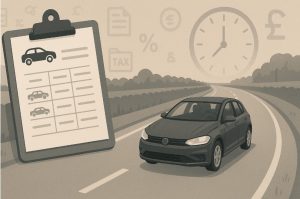
Mileage rates only apply in specific company car situations.
You can use these rates if you:
- Reimburse employees for business travel in their company cars
- Require employees to repay the cost of fuel used for private travel in company cars
You must not use these rates for personal vehicles or in situations outside company car use.
Reimbursing Employees for Business Travel
If the mileage rate paid is no higher than the advisory fuel rate for the car’s engine size and fuel type, there’s no taxable profit and no Class 1A National Insurance due.
If cars are more fuel-efficient or if actual travel costs are higher, businesses can use their own rates. However, if you pay above the advisory rates without evidence, the excess counts as taxable income and is subject to Class 1 National Insurance.
Employees Repaying Private Fuel Costs
Employees must repay the full cost of private fuel use to avoid a fuel benefit charge. This can be done using the advisory fuel rates or a higher rate if justified. Lower repayment rates are only acceptable if they fully cover the private fuel cost.
Accurate mileage records are essential to avoid tax liabilities. By using the correct mileage rates and keeping detailed records, employers can prevent unnecessary complications with HMRC.
How Are Advisory Fuel Rates Calculated?
HMRC calculates advisory fuel rates by analysing multiple data sources to reflect the true cost per mile.
Quarterly Reviews
Rates are reviewed four times a year, effective from:
- 1 March
- 1 June
- 1 September
- 1 December
Factors Considered
- Mean MPG figures from car manufacturers, weighted by business sales
- Fuel prices from the Department for Energy Security and Net Zero and the Automobile Association
- Electricity prices for electric vehicles, using data from the Department for Transport, DESNZ, and Office for National Statistics
For liquefied petroleum gas (LPG), HMRC reduces the MPG figure by 20% compared to petrol due to lower energy density.
Rounding Method
Rates are calculated to one decimal place and then rounded to the nearest penny.
- Figures ending in 0.5 round down if under 0.5 (e.g., 0.487 becomes 0)
- Figures ending over 0.5 round up (e.g., 0.513 becomes 1)
This ensures fairness without overestimating fuel costs.
By following these structured calculations, HMRC provides clear, reliable guidance for businesses.
What Are the Latest Petrol, Diesel, LPG, and Electric Rates for 2025?
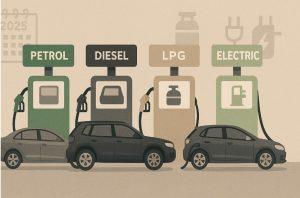
Below are the advisory fuel rates effective in 2025.
Petrol Cars
| Engine Size (cc) | Rate Per Mile (June 2025) |
| Up to 1400 | 12p |
| 1401 to 2000 | 14p |
| Over 2000 | 22p |
Diesel Cars
| Engine Size (cc) | Rate Per Mile (June 2025) |
| Up to 1600 | 11p |
| 1601 to 2000 | 13p |
| Over 2000 | 17p |
LPG Cars
| Engine Size (cc) | Rate Per Mile (June 2025) |
| Up to 1400 | 11p |
| 1401 to 2000 | 13p |
| Over 2000 | 21p |
Electric Cars
From June 2025, fully electric cars have an advisory rate of 7p per mile.
Electric rates are calculated based on:
- Electrical consumption rates per model
- Electricity costs per kilowatt-hour
- Weighted average across business car sales
This approach reflects the growing importance of electric vehicles in corporate fleets.
How Do Hybrid Cars Fit Into HMRC Advisory Fuel Rates?
Hybrid cars, combining internal combustion engines with electric motors, are becoming more common in UK company fleets.
HMRC simplifies the approach by treating hybrids under either petrol or diesel rates, depending on their primary fuel type. This means no separate hybrid rate is provided.
Employers should:
- Use petrol advisory rates for petrol-hybrid cars
- Use diesel advisory rates for diesel-hybrid cars
This keeps calculations straightforward and avoids unnecessary complications.
Hybrid owners and employers should remember that although hybrids may be more fuel-efficient, the advisory rate does not factor in electric cost savings separately.
If actual costs are lower, businesses can apply custom rates, provided they have documentation.
How Does Reimbursing Employees for Company Car Travel Work?

When businesses reimburse employees for business mileage, understanding tax implications is vital.
If payments are within the advisory rates:
- No taxable profit arises for the employee
- No Class 1A National Insurance is due
If employers pay more than the advisory rate, they need to justify it, showing that actual fuel costs per mile are higher. Without proof, any excess counts as taxable income and is subject to Class 1 National Insurance.
Important Notes
- Payments above advisory rates solely for business miles avoid fuel benefit charges but must be justified.
- Employees receiving rates below advisory rates have no tax implications but may be undercompensated.
Proper documentation helps ensure smooth reimbursements and avoids HMRC issues.
How Should Employees Repay for Private Fuel Use?
Private fuel use in company cars can create taxable benefits unless correctly managed.
To avoid a fuel benefit charge, employees must:
- Record all private mileage accurately
- Repay the cost of private fuel using at least the advisory rates
Employers do not have to use advisory rates if they can prove the full cost is covered at a lower rate.
For example, if an employee repays fuel at a rate reflecting actual costs, even if below advisory rates, no fuel benefit charge applies.
Clear records and transparent repayment arrangements are key to avoiding additional tax liabilities.
What Are the Approved Mileage Rates from 2011 to 2025?
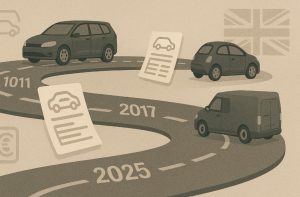
The approved mileage rates (AMRs) have remained stable since the 2011 tax year.
| Vehicle Type | First 10,000 Miles | Over 10,000 Miles |
| Cars and Vans | 45p | 25p |
| Motorcycles | 24p | 24p |
| Bicycles | 20p | 20p |
For carrying fellow employees, the passenger payment is 5p per mile. This applies only to cars and vans and must be specifically paid for carrying passengers.
What Are the Company Car and Van Benefit Charges in 2025?
Employers and employees should also be aware of benefit charges linked to company cars and vans.
Company Car Charges
The charge is calculated based on the car’s list price, accessories, and an appropriate percentage linked to CO2 emissions.
Car Fuel Benefit Multiplier
| Tax Year | Amount |
| 2025–2026 | £28,200 |
Company Van Benefit Charges
| Tax Year | Amount |
| 2025–2026 | £4,020 |
Van Fuel Benefit
| Tax Year | Amount |
| 2025–2026 | £769 |
Employers must account for these amounts when providing vehicles and fuel for employee use.
What Are Key Considerations for Employers in 2025?

Employers managing company car schemes should focus on:
- Maintaining accurate mileage records
- Applying the correct advisory rates
- Adjusting rates where cars are notably more efficient
- Using previous rates for up to one month after a new rate applies
Tips for Best Practice
- Review rates quarterly
- Communicate rate changes to employees promptly
- Ensure private mileage is clearly recorded and repaid
By staying informed and proactive, employers can avoid unnecessary costs and compliance issues.
Conclusion
Understanding HMRC Advisory Fuel Rates in 2025 is essential for UK businesses with company cars. By applying the right rates, maintaining accurate records, and staying aware of benefit charges, employers can manage reimbursements fairly and stay tax-compliant.
Whether dealing with petrol, diesel, LPG, or electric vehicles, these rates provide a clear framework for navigating business mileage.
FAQs
What is the purpose of HMRC advisory fuel rates?
They guide businesses on reimbursing fuel costs fairly for company car use, avoiding extra tax charges.
Are hybrid vehicles treated separately under HMRC fuel rates?
No, hybrids are included under petrol or diesel rates, depending on their main fuel type.
Can an employer set its own mileage rates?
Yes, but they must provide evidence if paying above advisory rates to avoid tax on the excess.
How often are HMRC advisory fuel rates updated?
Rates are reviewed and updated quarterly in March, June, September, and December.
What happens if an employee doesn’t repay private fuel costs?
The employee may face a fuel benefit tax charge based on set HMRC multipliers.
Do electric cars have a different advisory rate?
Yes, as of June 2025, the electric advisory rate is 7p per mile.
How long can previous advisory rates be used?
You can apply old rates for up to one month after new rates come into effect.

